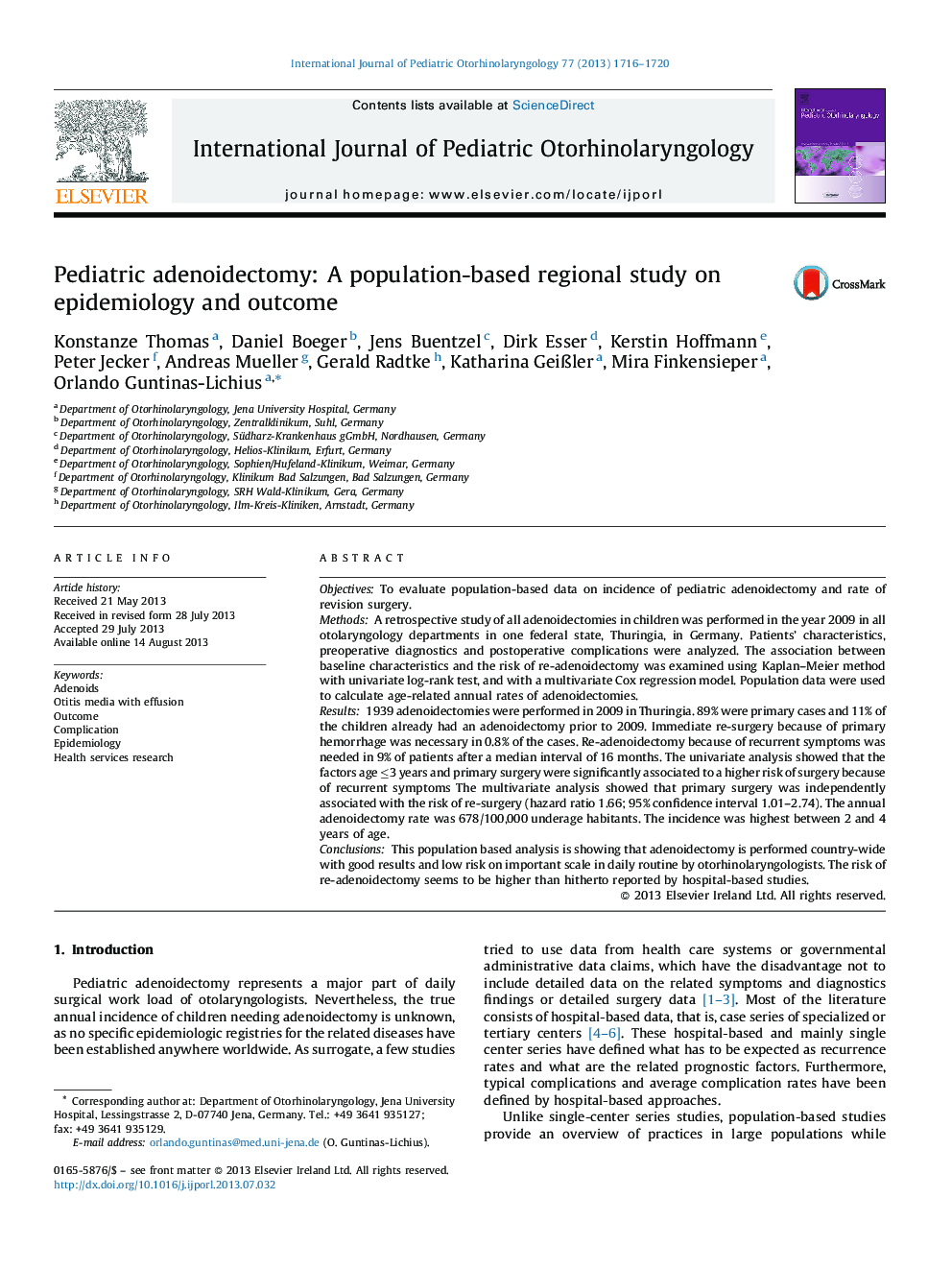| Article ID | Journal | Published Year | Pages | File Type |
|---|---|---|---|---|
| 4112884 | International Journal of Pediatric Otorhinolaryngology | 2013 | 5 Pages |
ObjectivesTo evaluate population-based data on incidence of pediatric adenoidectomy and rate of revision surgery.MethodsA retrospective study of all adenoidectomies in children was performed in the year 2009 in all otolaryngology departments in one federal state, Thuringia, in Germany. Patients’ characteristics, preoperative diagnostics and postoperative complications were analyzed. The association between baseline characteristics and the risk of re-adenoidectomy was examined using Kaplan–Meier method with univariate log-rank test, and with a multivariate Cox regression model. Population data were used to calculate age-related annual rates of adenoidectomies.Results1939 adenoidectomies were performed in 2009 in Thuringia. 89% were primary cases and 11% of the children already had an adenoidectomy prior to 2009. Immediate re-surgery because of primary hemorrhage was necessary in 0.8% of the cases. Re-adenoidectomy because of recurrent symptoms was needed in 9% of patients after a median interval of 16 months. The univariate analysis showed that the factors age ≤3 years and primary surgery were significantly associated to a higher risk of surgery because of recurrent symptoms The multivariate analysis showed that primary surgery was independently associated with the risk of re-surgery (hazard ratio 1.66; 95% confidence interval 1.01–2.74). The annual adenoidectomy rate was 678/100,000 underage habitants. The incidence was highest between 2 and 4 years of age.ConclusionsThis population based analysis is showing that adenoidectomy is performed country-wide with good results and low risk on important scale in daily routine by otorhinolaryngologists. The risk of re-adenoidectomy seems to be higher than hitherto reported by hospital-based studies.
